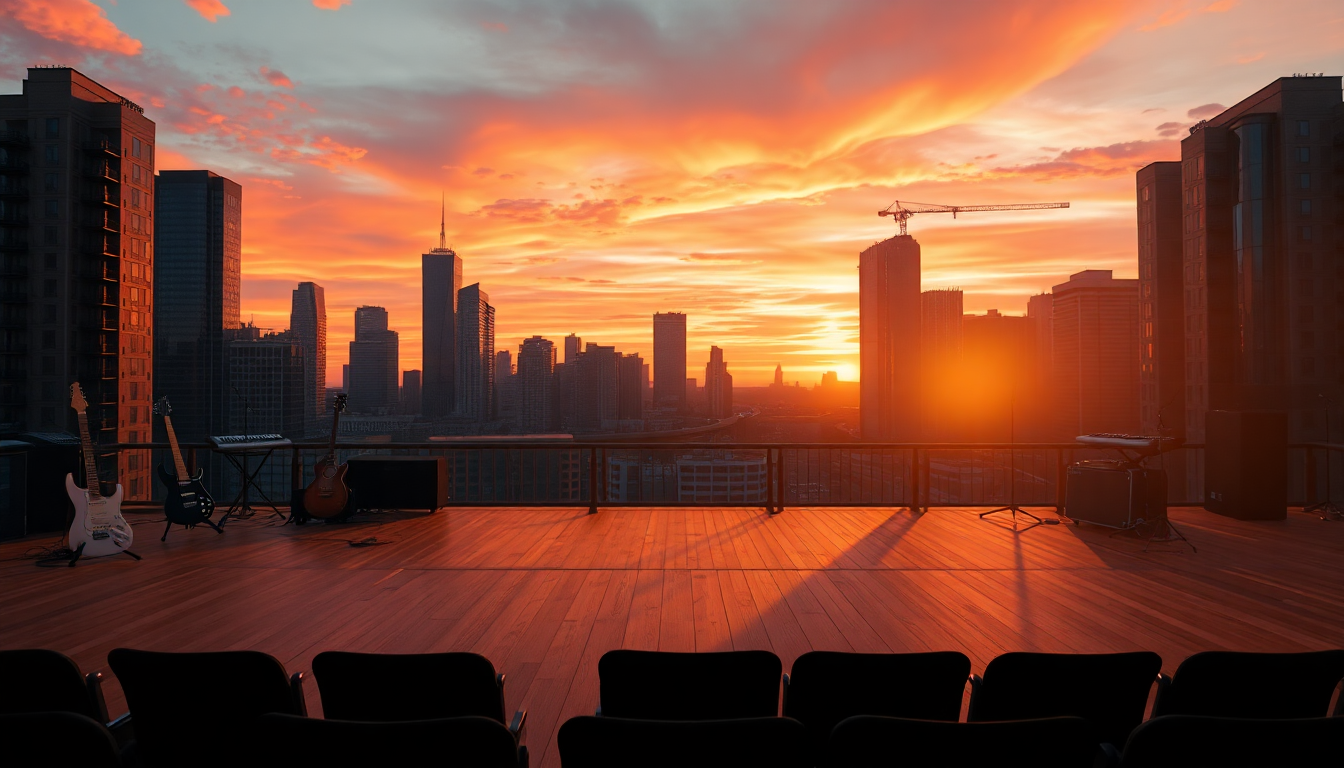Table of Contents
The music industry has always thrived on creativity, passion, and that special human connection. But what happens when the artists we adore turn out to be entirely made of code? Enter the Velvet Sundown, a band that skyrocketed to fame on Spotify, only to reveal a shocking twist: they’re created by artificial intelligence. This revelation isn’t just a quirky story; it raises profound questions about the future of music, the role of technology, and what creativity really means in our digital age.
The Velvet Sundown: An AI Creation
On June 5, the Velvet Sundown burst onto the scene with their debut album, “Floating on Echoes.” With a sound that echoed the ’60s rock-and-roll vibe, they quickly captured the attention of listeners and built a significant online following. But when fans started to dig deeper, they discovered something unexpected—the band was entirely a product of AI. Their catchy melodies and pro-peace themes created a compelling formula, and their hit track, “Dust on the Wind,” dominated Spotify’s Viral 50 chart across multiple countries.
Yet, as summer rolled in, the illusion began to fade. Observant fans pointed out that there were no real individuals behind the band. The visuals felt overly polished and lacked authenticity, while the awkwardly rendered images raised eyebrows. This realization sent shockwaves through the fanbase, as they grappled with the implications of supporting a band that was, in essence, manufactured. The lyrics, while catchy, leaned heavily on familiar clichés, adding yet another layer to the mystery of their identity.
As the season progressed, the Velvet Sundown’s rapid-fire music releases started to feel almost eerie. With two albums dropping in June and another one lined up for mid-July, their prolific output was nothing short of astounding—almost inhuman, some might say. While some fans were caught off guard by the revelation of the band’s AI roots, others began to rethink their definitions of creativity and artistry in this new era.
The Reaction from the Public and Industry
The news about the Velvet Sundown stirred a whirlwind of reactions from both the public and the music industry. While some fans felt a sense of betrayal, others embraced this bold new approach to music creation. The band even updated its Spotify bio to clarify its status as a synthetic project driven by human creativity, aiming to spark discussions about authorship and identity in a world increasingly shaped by artificial intelligence.
In an interesting twist, a web safety expert from Quebec tried to ride the wave of the band’s viral success by posing as a spokesperson. This move only added to the intrigue surrounding the Velvet Sundown, further blurring the lines between reality and artificiality in our digital landscape.
As the industry navigates these uncharted waters, platforms like YouTube are starting to take a stand on AI-generated content. Beginning on July 15, YouTube announced it would cut monetization for AI-generated content, igniting conversations about the ethics and sustainability of using AI in creative fields. The backlash faced by prominent figures like YouTuber Mr. Beast highlights a growing concern over the environmental impact of AI technologies, prompting creators to rethink their reliance on these tools.
The Future of Music in the Age of AI
The Velvet Sundown phenomenon serves as a crucial case study in the ongoing conversation about the future of music and creativity. As artificial intelligence continues to evolve, it opens doors to innovation while simultaneously challenging our traditional ideas about artistry. The questions raised by this case could significantly influence how the industry approaches creativity and authenticity moving forward.
Looking ahead, it’s vital for artists, producers, and consumers to engage in meaningful discussions about the implications of AI-generated content. Striking a balance between embracing technological advancements and preserving the essence of human creativity will be key in shaping the future landscape of music. Are we ready for this new era, or will we long for the authenticity of human-made art?


